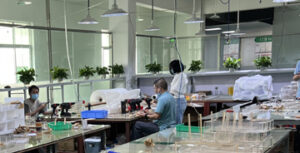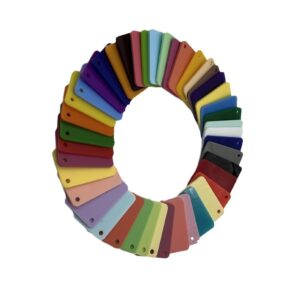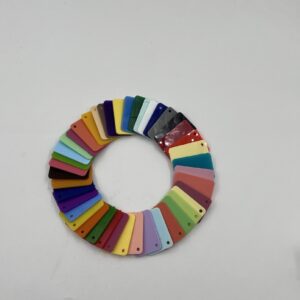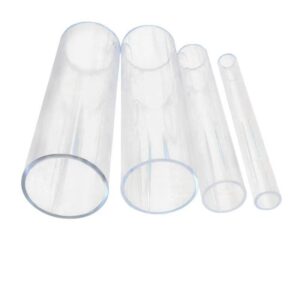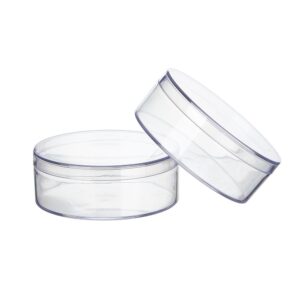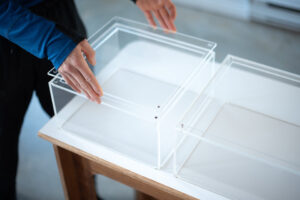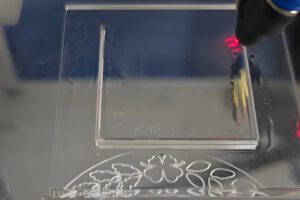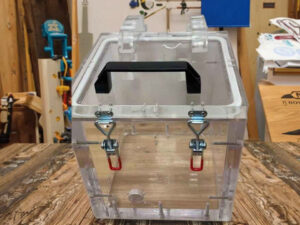Summary
Acrylic sheets, a versatile and innovative material, have become increasingly integral to modern architectural design, offering a blend of aesthetic appeal and functional benefits. Known for their exceptional properties, including strength, optical clarity, water resistance, and thermal insulation, acrylic sheets serve a wide range of applications from structural elements to decorative features in both residential and commercial buildings. Their lightweight nature, durability, and ability to be easily molded into various shapes have made them a preferred choice for architects and designers aiming to create contemporary spaces that prioritize both form and function.
The historical context of acrylic’s use in architecture traces back to the early 20th century, gaining significant traction in the post-war era as designers began to explore its potential for creating light-filled environments and organic forms. This material not only transformed everyday design concepts but also became synonymous with mid-century modern aesthetics. Notable applications include public art installations, innovative furniture design, and unique building facades that enhance both visibility and environmental sustainability. Furthermore, acrylic gained prominence during the COVID-19 pandemic as it was utilized in protective barriers, illustrating its adaptability to contemporary needs.
Despite its advantages, the use of acrylic sheets is not without challenges. Concerns regarding their initial cost compared to traditional materials, maintenance requirements, and safety compliance issues have led to ongoing debates about their widespread adoption in construction projects. Additionally, user perception and acceptance of acrylic over more conventional materials remain barriers to its full integration in architectural design.
As trends continue to evolve, the architectural applications of acrylic sheets are poised for further expansion, with innovations in fabrication techniques and a growing focus on sustainability. Future developments may include the integration of smart technology, enhanced insulation properties, and recycling practices, reinforcing acrylic’s role as a key player in shaping the future of modern design.
Table of Contents
Properties of Acrylic Sheets
Acrylic sheets are renowned for their exceptional properties that make them a popular choice in architectural design and construction. These properties include strength, water resistance, acoustic performance, and optical clarity, among others.
Strength and Durability
Acrylic sheets exhibit a versatile range of strengths tailored to various applications, from signage to windows. They are lightweight yet robust, offering an impressive balance of flexible strength across different grades, including glassy, ductile, hard, and impact-resistant types, which are determined by product thickness and fabrication methods. Compared to traditional materials like glass, acrylic is significantly stronger and much more impact-resistant, making it safer for environments prone to breakage.
Water Resistance
Acrylic demonstrates excellent water resistance, with minimal liquid absorption of less than 0.4% by weight even after prolonged submersion. Its low vapor permeability allows for effective humidity control within interior spaces. Moreover, acrylic’s high coefficient of hygroscopic expansion necessitates design accommodations to mitigate swelling under increased humidity levels. The material is adept at repelling liquid ingress, thus serving effectively as a protective barrier in various applications.
Acoustic Properties
Acrylic sheets also exhibit beneficial acoustic properties, making them suitable for applications where sound insulation is important. These properties allow for the reduction of noise transmission in buildings, contributing to a more comfortable and quieter indoor environment.
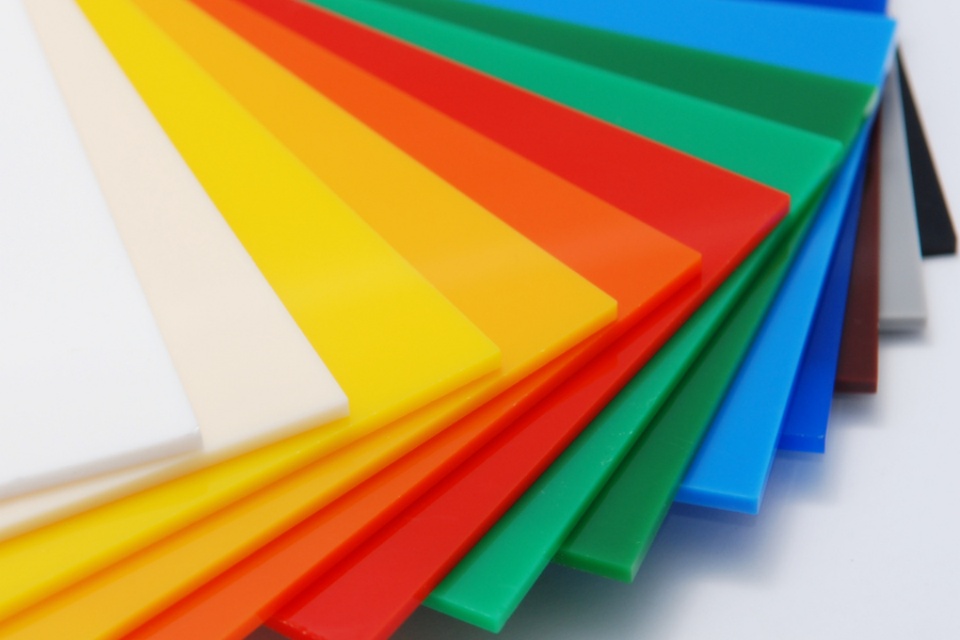
Optical Clarity and Light Transmission
One of the standout features of acrylic sheets is their remarkable optical clarity, allowing for up to 92% light transmission. This high level of clarity is crucial in architectural applications, particularly for displays, windows, and observation domes in astronomy where UV filtering is essential. Unlike glass, acrylic does not yellow or degrade under prolonged UV exposure, maintaining its clarity and effectiveness in sunlight. This makes acrylic an excellent choice for structures that require sustained light transmission over time.
Insulation Properties
In addition to its other properties, acrylic sheets provide superior thermal insulation compared to glass, effectively blocking heat flow and enhancing energy efficiency in building designs. Their ability to maintain thermal performance while allowing natural light to penetrate is particularly advantageous for modern architectural applications.
Versatility and Ease of Use
Acrylic sheets are versatile and can be easily molded and shaped when heated, making them suitable for a variety of design projects. They come in various finishes, colors, and textures, allowing architects and designers to create unique and aesthetically pleasing elements within their designs. Their lightweight nature facilitates ease of handling and installation, contributing to safer construction practices and innovative architectural solutions.
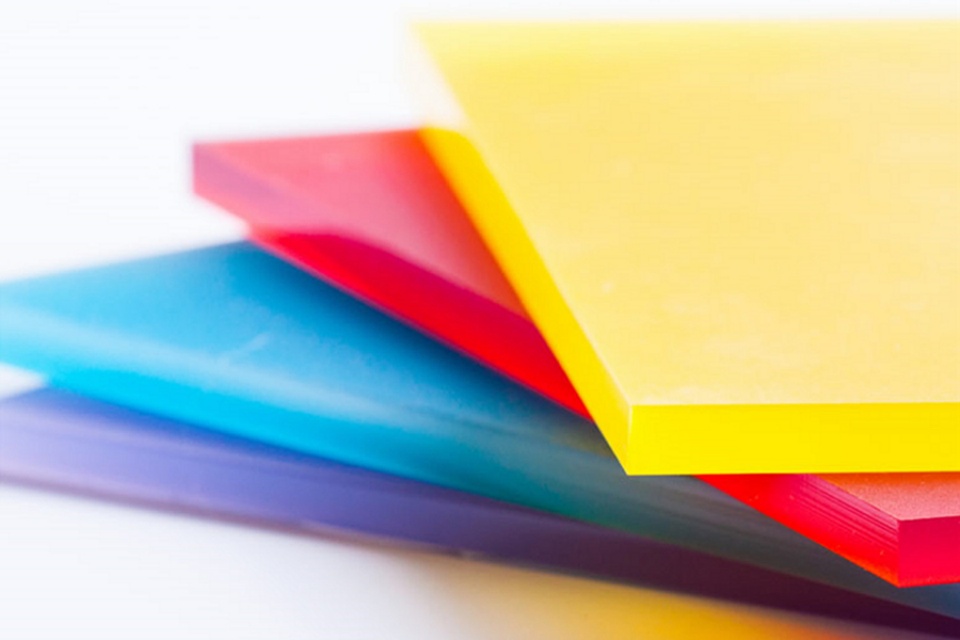
Historical Context
Acrylic, known for its versatility and aesthetic appeal, has played a significant role in the evolution of modern architecture. Its rise to prominence began in the early 20th century and continued to gain momentum throughout the decades, particularly in the post-war era. The Hollywood elite embraced acrylic as a symbol of wealth and status, often featuring it in luxurious homes and film sets, which cemented its association with mid-century glamor and space-age aesthetics.
The post-war period marked a pivotal shift in architectural design as new materials, including acrylic, began to be appreciated not only for their functional properties but also for their aesthetic possibilities. During the 1960s and 1970s, architects increasingly experimented with plexiglass, utilizing its ability to create light-filled, seamless spaces and organic forms that aligned with contemporary design trends. This period of innovation saw acrylic expand beyond mere windows and skylights to serve as larger structural elements and decorative features in modernist architecture.
Acrylic’s significance surged during critical historical events, notably World War II, when it was employed for military applications due to its durability and clarity. Following this period, the material found renewed importance during the COVID-19 pandemic, becoming a vital component in safety measures across public spaces as plexiglass shields were deployed to reduce viral transmission in restaurants, grocery stores, and other venues.
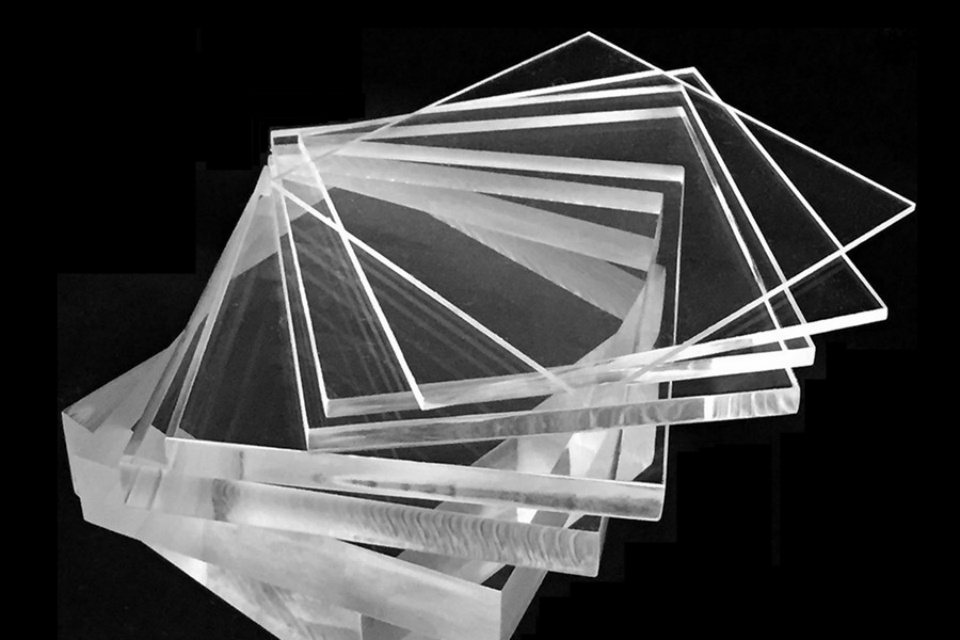
Applications in Modern Design
Innovative Furniture Design
Acrylic has transformed modern furniture design, enabling the creation of pieces that blend functionality with artistic expression. Designers are increasingly utilizing high-strength acrylic formulations to craft items such as floating shelves and ghost chairs, which appear to defy gravity while maintaining structural integrity and clarity. The unique properties of acrylic allow for innovative shapes and designs that challenge traditional furniture concepts.
Architectural Elements
Colored acrylic sheets have become a popular choice for various architectural applications, enhancing both aesthetic appeal and functionality. They are used in features such as backlit panels and textured surfaces, which not only serve as room dividers but also contribute to atmospheric lighting effects within spaces. Furthermore, the integration of acrylic sheets in building facades and interiors has led to dynamic architectural designs, as seen in notable projects like a commercial building in New York that employs translucent colored panels for a luminous façade.
Public Space Transformations
The versatility of colored acrylic sheets extends to public spaces, where they are utilized in art installations, signage, and functional elements such as bus shelters. By adding aesthetic value and engaging design, acrylic plays a critical role in enhancing urban environments and making them more visually appealing.
Signage and Branding
Acrylic’s properties make it an ideal material for commercial signage. It offers a polished and durable solution that effectively communicates brand identity. Customized acrylic signs can be tailored to any shape and size, featuring vibrant colors that enhance visibility and aesthetic appeal. Additionally, illuminated acrylic signs are particularly effective in capturing attention in busy areas, thereby improving brand presence.
Artistic Applications
In the realm of art, acrylic sheets are increasingly favored for large-scale sculptures and installations. The material’s adaptability allows artists to create both freestanding and suspended pieces that engage viewers in new ways. Collaborations between artists and designers have led to innovative uses of acrylic in mixed media works and interactive displays, pushing the boundaries of traditional art forms.
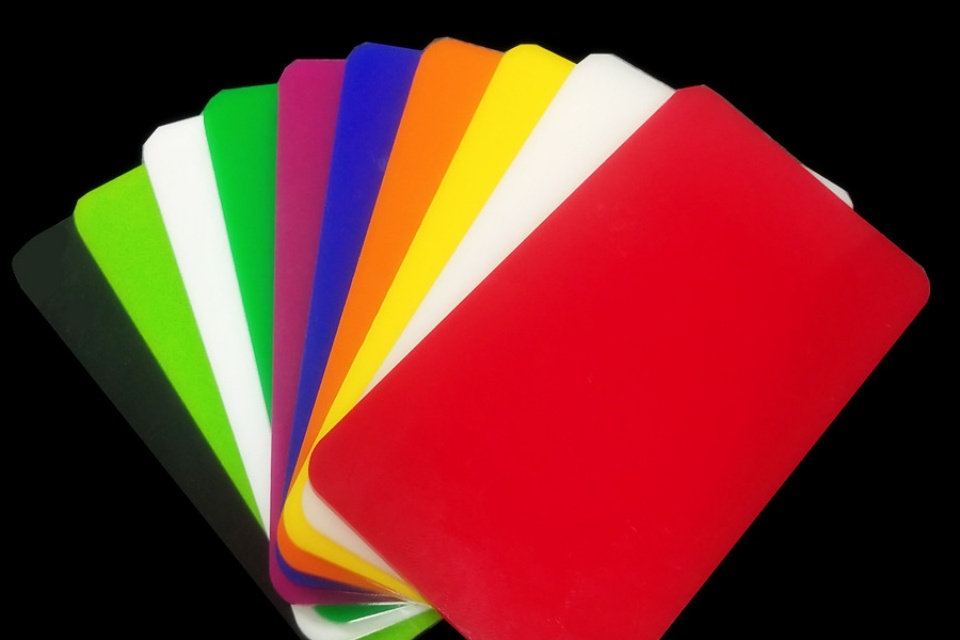
Architectural Glazing
Acrylic sheets are also employed in architectural glazing, providing a lightweight and impact-resistant alternative to traditional glass. Their optical clarity, combined with customizable shapes, enables architects to design windows, skylights, and facades that are both functional and visually striking. Acrylic’s superior thermal insulation properties further contribute to energy efficiency in building designs, making it an attractive choice for sustainable architecture.
Customization and Versatility
The extensive range of acrylic types–including opaque, transparent, and UV-resistant variations–allows for complete design customization in modern architecture. This adaptability facilitates creative solutions for specific project requirements, enhancing the overall functionality and aesthetic appeal of the structures. Through precise cutting and molding, architects can achieve intricate designs that may be difficult with traditional materials, making acrylic a go-to option for contemporary design challenges.
Benefits of Using Acrylic Sheets
Acrylic sheets offer numerous advantages that make them a popular choice in modern architectural applications. Their unique properties enhance both functionality and aesthetics in various design contexts.
Cost-Effectiveness
From a financial perspective, acrylic sheets offer a cost-effective solution for many construction projects. Their durability translates to lower lifecycle costs, reducing the frequency of replacements and repairs that are often required with other materials. Additionally, the ease of manufacturing and installation associated with acrylic sheets contributes to overall cost savings in project execution, making them a compelling choice for budget-conscious designs.
Versatility and Durability
Acrylic sheets are recognized for their versatility and durability, serving as a lightweight and shatter-resistant alternative to glass. This makes them ideal for a range of applications, including furniture, countertops, window panels, and decorative elements. Their ability to withstand impact better than glass provides an added layer of safety, particularly in environments frequented by children or where breakage is a concern.
Aesthetic Flexibility
The aesthetic flexibility of acrylic sheets is another significant benefit. Available in a wide variety of colors and finishes, they can be tailored to suit diverse design themes and requirements, allowing architects and designers to create visually stunning environments. This adaptability enhances the overall aesthetic appeal of spaces, making acrylic sheets an attractive option for both interior and exterior applications.
Lightweight and Easy to Install
One of the most notable characteristics of acrylic sheets is their lightweight nature, which simplifies handling, transportation, and installation. This feature is particularly beneficial when dealing with large panels or complex architectural designs, as it reduces structural load and facilitates innovative design possibilities.
Weather Resistance and Low Maintenance
Acrylic sheets are resistant to UV radiation and various weather conditions, ensuring longevity and minimal maintenance needs. Unlike other materials that may deteriorate due to environmental exposure, acrylic maintains its clarity and structural integrity over time, which is essential for outdoor applications such as facades and skylights. The ease of cleaning acrylic surfaces further enhances their appeal, as they can be maintained with simple household solutions to preserve their appearance without requiring extensive upkeep.
Challenges and Limitations
While acrylic sheets offer numerous benefits for architectural applications, several challenges and limitations must be addressed to ensure their effective use in modern design.
Market Barriers
One of the significant challenges faced by acrylic sheet systems is their high initial cost compared to traditional materials. This financial barrier can deter adoption, particularly in commercial and architectural projects where budget constraints are critical. Furthermore, the technology behind advanced acrylic systems, such as those designed to transport natural light to windowless spaces, remains underutilized due to difficulties in implementation and maintenance requirements. These challenges include ensuring consistent daylight quality, managing heat gains and losses, and overcoming user awareness and acceptance issues.
Maintenance and Durability Concerns
Acrylic sheets require specific maintenance practices to preserve their quality and durability over time. For example, they are susceptible to scratches and UV degradation, which can lead to yellowing and brittleness if not properly protected. It is essential to employ protective films and ensure appropriate storage conditions to mitigate these risks. Moreover, maintaining stable temperature and humidity levels is crucial, as fluctuations can result in warping or distortion of the material.
Safety and Compliance
Another limitation pertains to safety regulations and building codes. When using colored acrylic sheets in construction, adherence to specific fire safety standards is paramount. Acrylic materials, particularly those not treated for fire resistance, can fail to meet safety expectations in high-temperature scenarios, as they may burn rapidly and produce toxic fumes. Consequently, professionals must ensure that the materials used comply with local building codes and standards related to fire resistance, impact resistance, and structural integrity. This compliance not only impacts the legality of the projects but also the safety of their occupants.
User Perception and Acceptance
User awareness and acceptance of acrylic materials pose additional challenges. Although they offer advantages like lightweight, durability, and aesthetic appeal, potential users may still prefer traditional materials due to familiarity or perceived limitations in performance and safety. Educating stakeholders on the benefits and appropriate applications of acrylic sheets is essential to enhance their acceptance in architectural projects.
Case Studies
Urban Greenhouses and Vertical Farms
Plexiglass has been extensively used in urban settings to create rooftop greenhouses and vertical farms, contributing significantly to urban agriculture. These structures not only provide fresh produce but also enhance the thermal performance of buildings through passive solar heating, making them a sustainable choice in densely populated areas.
Interactive Facades
An innovative application of plexiglass can be seen in interactive facades, such as those utilized in commercial buildings. For instance, a plexiglass façade integrated with LEDs and sensors allows the building to display dynamic visual content, transforming it into a living canvas that engages with both its environment and occupants.
Modular Housing Solutions
Plexiglass also plays a crucial role in modular housing design. Its lightweight nature and ease of fabrication make it ideal for prefabricated components that can be quickly assembled on-site, addressing the urgent need for efficient and scalable housing solutions in urban contexts.
The Glass House: Residential Use
The Glass House in New Canaan serves as a notable case study of residential use of plexiglass. This architectural masterpiece showcases how transparency and light play essential roles in residential design, allowing for an immersive connection with the surrounding landscape.
The Cube Office Building: Commercial Use
Designed by Ken Shuttleworth’s Make Architects, The Cube Office Building in Birmingham, UK, exemplifies modern commercial architecture utilizing plexiglass extensively. The building features a sleek exterior curtain wall system of large, uninterrupted plexiglass panes that allow abundant natural light while offering expansive views of the city. Inside, clear and frosted plexiglass panels are employed for office partitions and meeting rooms, balancing privacy and openness.
Colored Acrylic in Public Spaces
In London, a public space was transformed by an interactive art installation made from colored acrylic sheets. This project demonstrated the versatility of acrylic, creating dynamic panels that altered appearance with light and movement, thus engaging the public in an immersive experience. Similarly, the Eco-Friendly School in California incorporated colored acrylic sheets in its exterior cladding, enhancing both aesthetic appeal and energy efficiency, further emphasizing the potential of acrylic in educational spaces.
The Rainbow Bridge: Enhancing Public Infrastructure
The Rainbow Bridge in Amsterdam utilized colored acrylic sheets to create a vibrant pedestrian experience. The design allows sunlight to interact with the acrylic, casting colorful shadows and creating a lively atmosphere. This project highlights the capacity of acrylic to enhance public spaces through innovative design.
The Green Pavilion: Sustainable Design
The Green Pavilion in San Francisco serves as a prime example of eco-friendly construction using colored acrylic sheets. The pavilion features colored panels that provide shade while allowing natural light to filter through, showcasing the environmental benefits of acrylic, including its recyclability and energy efficiency. This project represents a model for sustainable design in contemporary architecture.
These case studies collectively illustrate the diverse applications of acrylic sheets in modern design, demonstrating their potential to enhance functionality, aesthetics, and sustainability across various architectural contexts.
Future Trends
Sustainable Production and Recycling
As the architectural industry shifts towards sustainability, future trends in acrylic use will increasingly focus on sustainable production methods and recycling practices. Innovations aimed at reducing the environmental impact of acrylic manufacturing are emerging, alongside advancements in recycling technologies that allow for the upcycling of acrylic materials. This focus on sustainability aligns with a broader commitment within the construction sector to integrate eco-friendly materials and practices, ensuring that acrylic remains a viable option for modern design.
Advancements in Fabrication Techniques
Advancements in fabrication techniques are expected to enhance the versatility of acrylic in architectural applications. Techniques such as laser cutting and 3D printing are allowing designers to create more intricate and customized shapes, expanding the creative possibilities for using acrylic in building facades, furniture, and decorative elements. As these technologies develop, they will enable the production of more complex and visually striking designs that leverage acrylic’s inherent qualities, such as clarity and adaptability.
Enhanced Insulation Properties
The architectural application of acrylic sheets will benefit from ongoing improvements in insulation properties. Acrylic is already recognized for its moderate energy efficiency and excellent thermal insulation capabilities, making it suitable for energy-efficient building designs. Future trends may see the development of new formulations that further enhance these properties, making acrylic an even more attractive option for windows, skylights, and other applications where thermal performance is critical.
Integration of Smart Technology
Another emerging trend is the integration of smart technology with acrylic materials. The potential for embedding sensors and smart functionalities within acrylic sheets offers exciting possibilities for energy management and building automation systems. This could enable real-time monitoring of environmental conditions, contributing to smarter, more responsive architectural designs.
Expanding Use in Diverse Applications
The use of acrylic sheets is anticipated to expand beyond traditional applications in signage and retail displays into more diverse sectors, including healthcare and residential construction. With its clarity, lightweight nature, and ease of cleaning, acrylic is becoming increasingly popular in medical environments, such as for protective barriers and medical equipment. Additionally, its aesthetic versatility makes it an appealing choice for modern homes, where it can be used in furniture, decorative elements, and interior partitions.
Creative and Innovative Design Solutions
Future architectural trends will likely see a surge in creative applications of acrylic, where designers leverage its aesthetic qualities to create unique visual effects. From colored and mirrored finishes to innovative light diffusion techniques, acrylic will play a critical role in shaping modern architectural identities. This trend towards customization will not only enhance visual appeal but also allow for greater expression of brand identity in commercial spaces.


